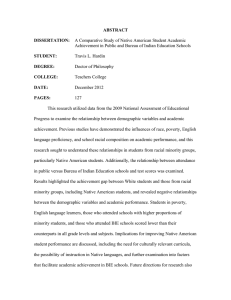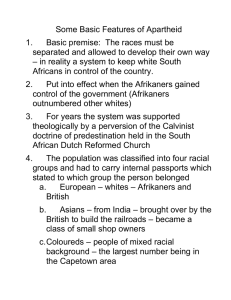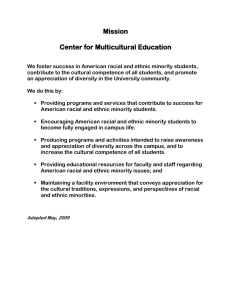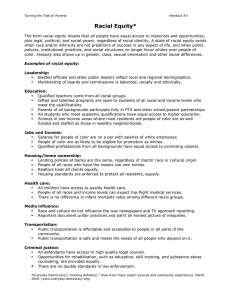North Seattle Community College Rememberings: The Roots of Our Voices Spring 2010
advertisement
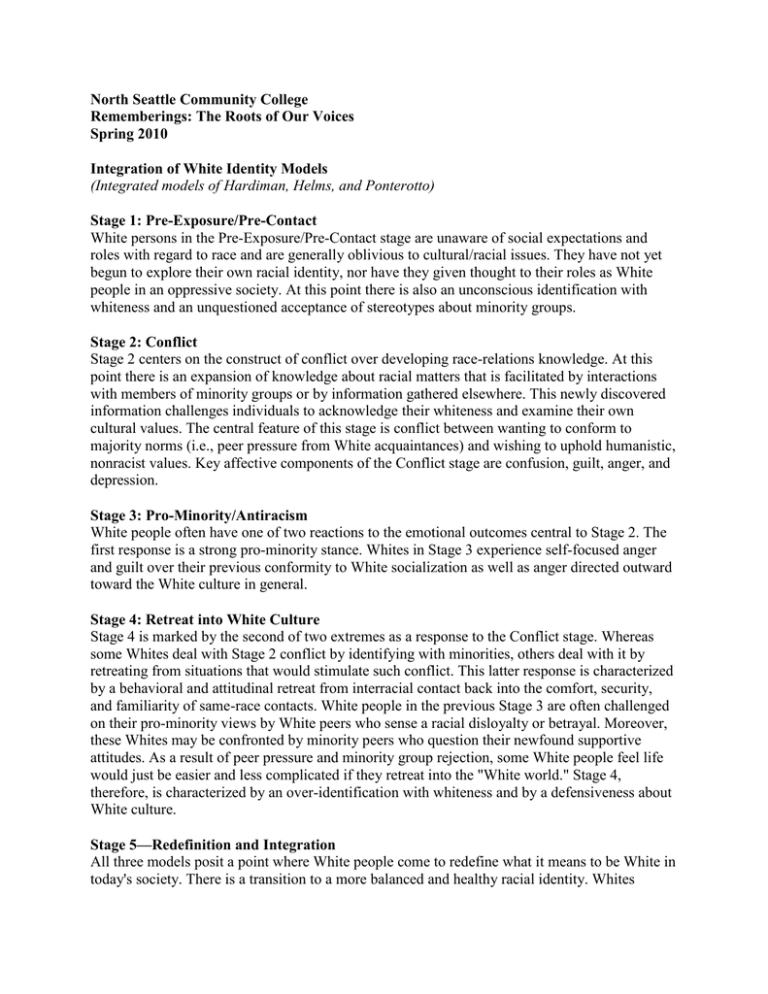
North Seattle Community College Rememberings: The Roots of Our Voices Spring 2010 Integration of White Identity Models (Integrated models of Hardiman, Helms, and Ponterotto) Stage 1: Pre-Exposure/Pre-Contact White persons in the Pre-Exposure/Pre-Contact stage are unaware of social expectations and roles with regard to race and are generally oblivious to cultural/racial issues. They have not yet begun to explore their own racial identity, nor have they given thought to their roles as White people in an oppressive society. At this point there is also an unconscious identification with whiteness and an unquestioned acceptance of stereotypes about minority groups. Stage 2: Conflict Stage 2 centers on the construct of conflict over developing race-relations knowledge. At this point there is an expansion of knowledge about racial matters that is facilitated by interactions with members of minority groups or by information gathered elsewhere. This newly discovered information challenges individuals to acknowledge their whiteness and examine their own cultural values. The central feature of this stage is conflict between wanting to conform to majority norms (i.e., peer pressure from White acquaintances) and wishing to uphold humanistic, nonracist values. Key affective components of the Conflict stage are confusion, guilt, anger, and depression. Stage 3: Pro-Minority/Antiracism White people often have one of two reactions to the emotional outcomes central to Stage 2. The first response is a strong pro-minority stance. Whites in Stage 3 experience self-focused anger and guilt over their previous conformity to White socialization as well as anger directed outward toward the White culture in general. Stage 4: Retreat into White Culture Stage 4 is marked by the second of two extremes as a response to the Conflict stage. Whereas some Whites deal with Stage 2 conflict by identifying with minorities, others deal with it by retreating from situations that would stimulate such conflict. This latter response is characterized by a behavioral and attitudinal retreat from interracial contact back into the comfort, security, and familiarity of same-race contacts. White people in the previous Stage 3 are often challenged on their pro-minority views by White peers who sense a racial disloyalty or betrayal. Moreover, these Whites may be confronted by minority peers who question their newfound supportive attitudes. As a result of peer pressure and minority group rejection, some White people feel life would just be easier and less complicated if they retreat into the "White world." Stage 4, therefore, is characterized by an over-identification with whiteness and by a defensiveness about White culture. Stage 5—Redefinition and Integration All three models posit a point where White people come to redefine what it means to be White in today's society. There is a transition to a more balanced and healthy racial identity. Whites acknowledge their responsibility for maintaining racism while at the same time identifying with a White identity that is nonracist and healthy. They see good and bad in their own group as they do in other groups. Energy is now devoted to nonracial issues and there is an interest in fighting all forms of oppression. Whites at this final stage are flexible and open with regard to culturelearning activities, both from their own racial group and other groups. Sabnani, Ponterotto, & Borodovsky, 1991 as cited in Ponterotto, J. & Pedersen, P. (1993). Preventing prejudice: A guide for counselors and educators. Multicultural Aspects on Counseling Series 2. Newbury Park, CA: Sage.
